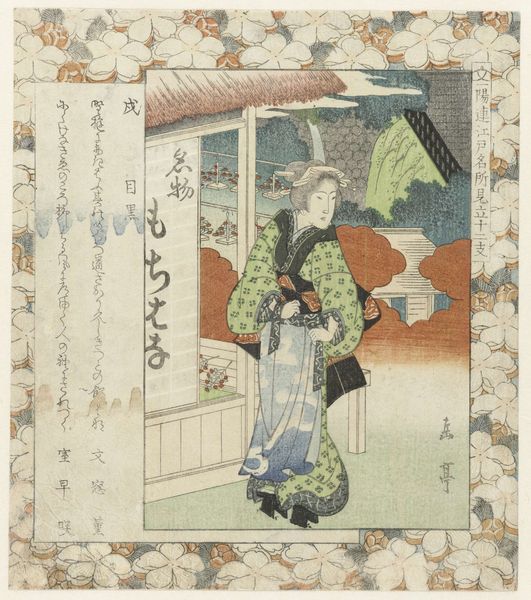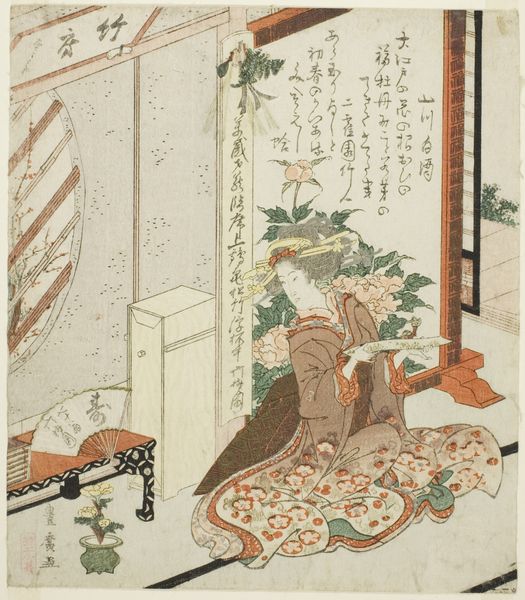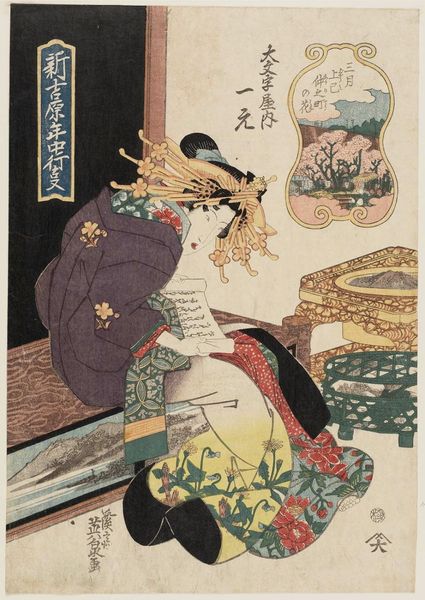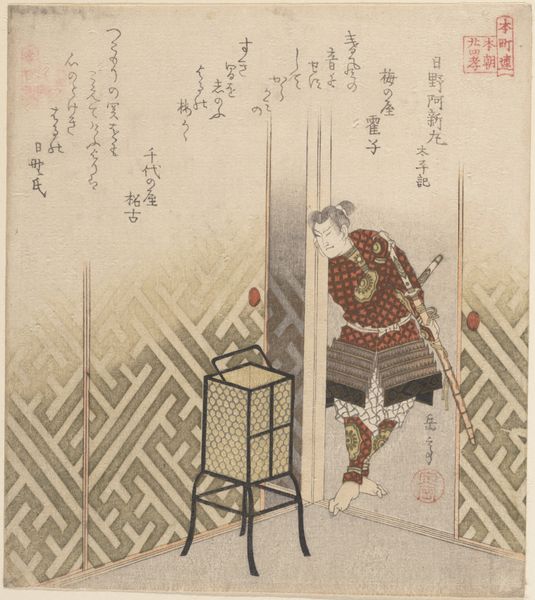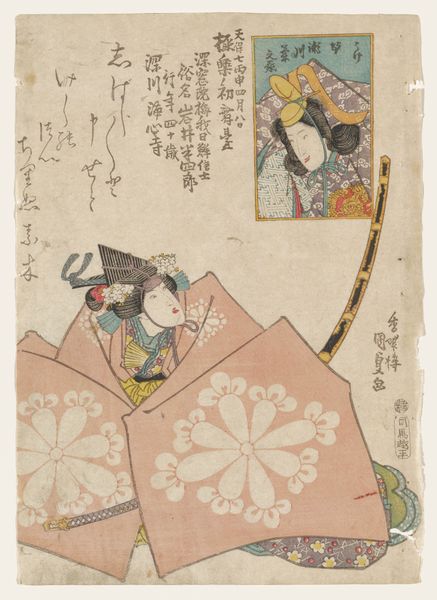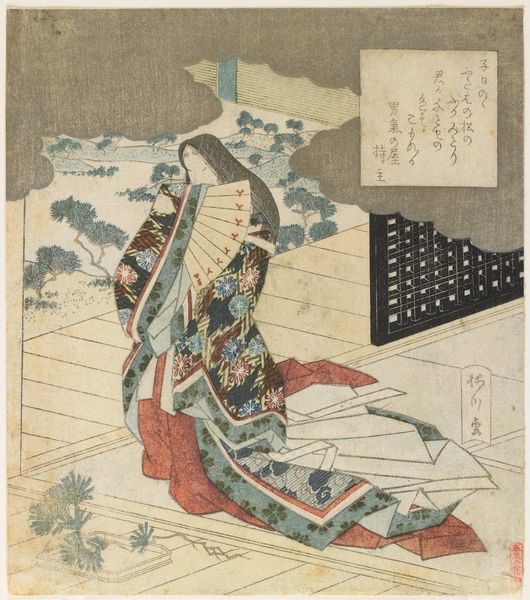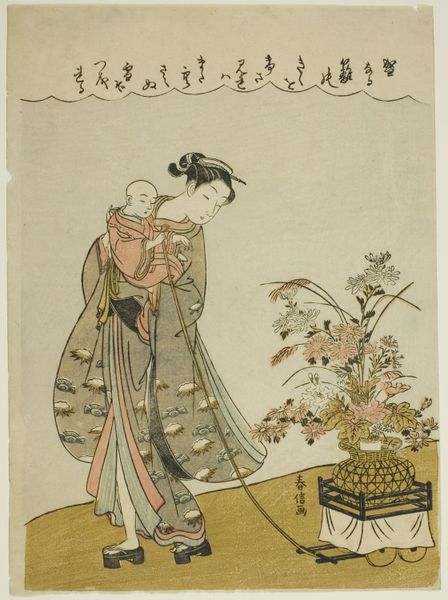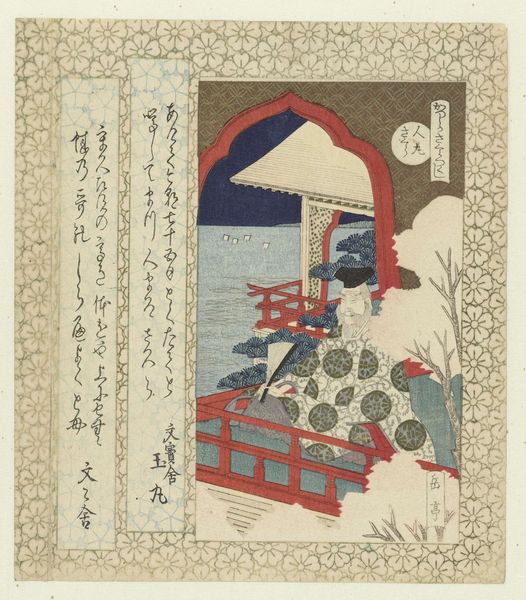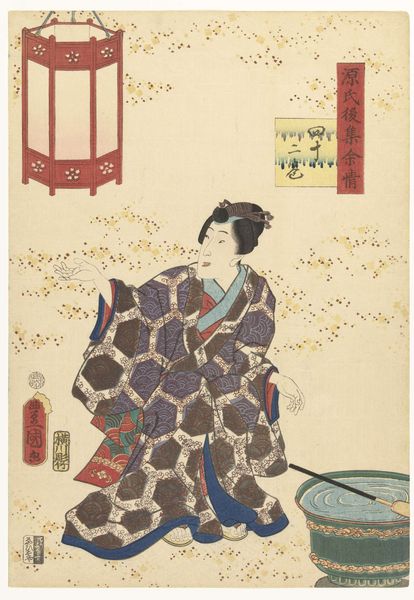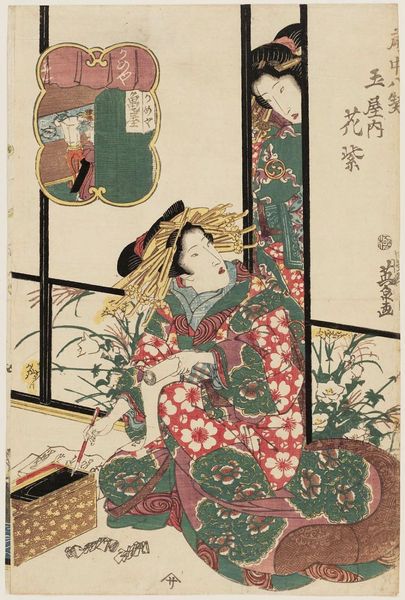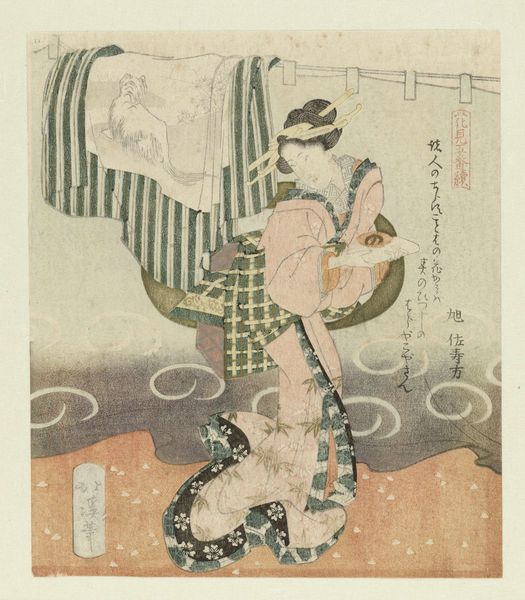
#
toned paper
#
childish illustration
#
illustrative and welcoming imagery
#
wedding around the world
#
illustrative and welcoming
#
watercolour bleed
#
watercolour illustration
#
cartoon carciture
#
cartoon theme
#
coloring book page
Dimensions: height 202 mm, width 182 mm
Copyright: Rijks Museum: Open Domain
Curator: Yashima Gakutei’s “Meisje met stuiterbal,” or “Girl with Bouncing Ball,” made around 1826, offers us a glimpse into the culture and imagery of the Edo period in Japan, now held at the Rijksmuseum. Editor: It’s delicate. I'm struck by the flatness, the pale watercolor palette. Everything feels so contained, as if pressed between the petals of those flowers circling the scene. Curator: Indeed. Gakutei was a master of the *surimono*, these privately commissioned woodblock prints often used for special occasions. The circle itself imitates a fan shape. The image, therefore, functioned as a beautiful and individualized form of social exchange. Editor: I see that now. The patterned kimono and detailed flowers, combined with what looks like calligraphy in the top-left, definitely suggests a more personal, expressive purpose beyond simple utility. Do you notice how the white wooden edge runs along the lower half and how there is no white border up above? Curator: Certainly. Such designs were highly fashionable amongst members of poetry circles, artists and upper-class people celebrating key social or seasonal events. These provided platforms for self-expression, conveying complex visual and textual allusions. The bouncing ball perhaps symbolizes playfulness, a youthful spirit even within formal artistry. Editor: You can't help but wonder who this woman is. Is she enjoying some leisure time or caught in a moment of reverie. Curator: Contextualizing this image involves considering its creation outside mainstream publishing circuits, thus the intimate themes of personal expression over broader social critiques, as it exists within a more refined world of artistic patronage. Editor: The composition and colour, however, speaks for itself –a kind of formal dance, creating visual intrigue that complements the print’s cultural weight. It pulls us right in. Curator: A perfect way of seeing Gakutei’s vision. It emphasizes art's intertwining social function with intricate personal narrative within the *surimono* form. Editor: Leaving us appreciating a refined artwork that transcends its immediate depiction of daily life through carefully crafted form.
Comments
No comments
Be the first to comment and join the conversation on the ultimate creative platform.
